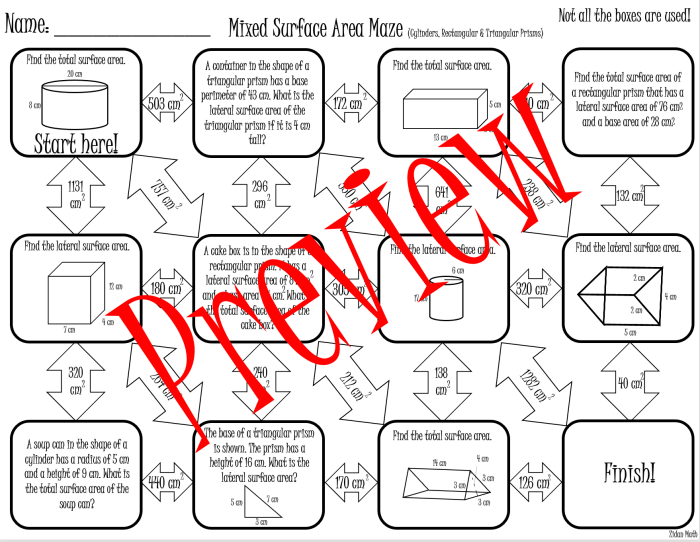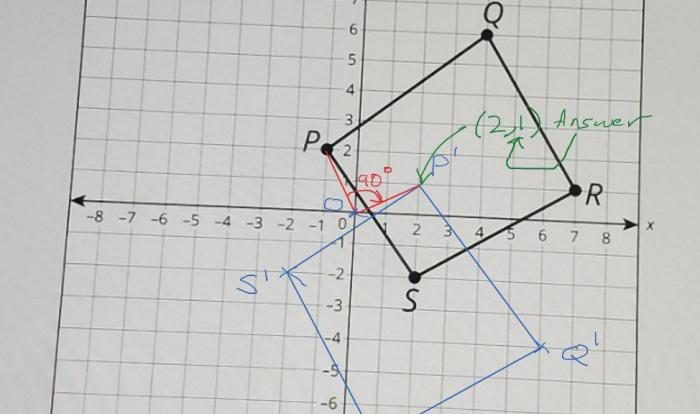Surface area of prisms and cylinders answer key – Unveiling the Surface Area of Prisms and Cylinders: Dive into a comprehensive exploration of the fundamental concept of surface area as it pertains to prisms and cylinders. This definitive guide delves into the intricacies of calculating surface area, unlocking a wealth of knowledge and practical applications across diverse fields.
Embark on a journey through the fascinating world of prisms and cylinders, where you’ll discover formulas, real-world examples, and advanced concepts that will empower you to tackle any surface area challenge with confidence.
Understanding Surface Area of Prisms

The surface area of a prism is the total area of all its faces. It is an important concept in geometry and has applications in various fields such as architecture, engineering, and packaging. There are different types of prisms, and each type has its own formula for calculating the surface area.
Calculating Surface Area of Rectangular Prisms
- Surface area = 2(lw + lh + hw)
- where l is the length, w is the width, and h is the height of the prism.
Calculating Surface Area of Triangular Prisms
- Surface area = 2(bh + 1/2(bh + bh))
- where b is the base length and h is the height of the prism.
Calculating Surface Area of Hexagonal Prisms
- Surface area = 2(6 – 1/2bh + bh)
- where b is the base length and h is the height of the prism.
Calculating Surface Area of Cylinders
The surface area of a cylinder is the total area of its curved surface and its two circular bases. The curved surface area is the area of the lateral surface of the cylinder, while the base area is the area of each circular end.
Calculating Surface Area of a Cylinder
- Surface area = 2πrh + 2πr²
- where r is the radius of the base and h is the height of the cylinder.
Relationship between Radius, Height, and Surface Area
The surface area of a cylinder is directly proportional to its radius and height. This means that as the radius or height of a cylinder increases, its surface area also increases.
Examples and Applications: Surface Area Of Prisms And Cylinders Answer Key
Real-World Examples
- Calculating the surface area of a rectangular prism to determine the amount of paint needed to cover a box.
- Calculating the surface area of a cylinder to determine the amount of material needed to make a cylindrical container.
Practical Applications
- Engineering:Designing and optimizing the surface area of components to improve heat transfer or fluid flow.
- Architecture:Calculating the surface area of buildings to determine the amount of insulation or roofing material needed.
- Packaging:Designing packaging that maximizes surface area to volume ratio for optimal product protection and display.
Advanced Concepts
Curved Surface Area
The curved surface area of a cylinder is the area of its lateral surface. It is calculated as:
- Curved surface area = 2πrh
Surface Area to Volume Ratio, Surface area of prisms and cylinders answer key
The surface area to volume ratio is a measure of the surface area of an object relative to its volume. It is an important concept in fields such as heat transfer and fluid dynamics.
Essential Questionnaire
What is the formula for calculating the surface area of a rectangular prism?
2(lw + lh + wh)
How do you find the surface area of a cylinder?
2πr(r + h)
What is the relationship between the surface area and volume of a prism?
The surface area of a prism is directly proportional to its volume.
